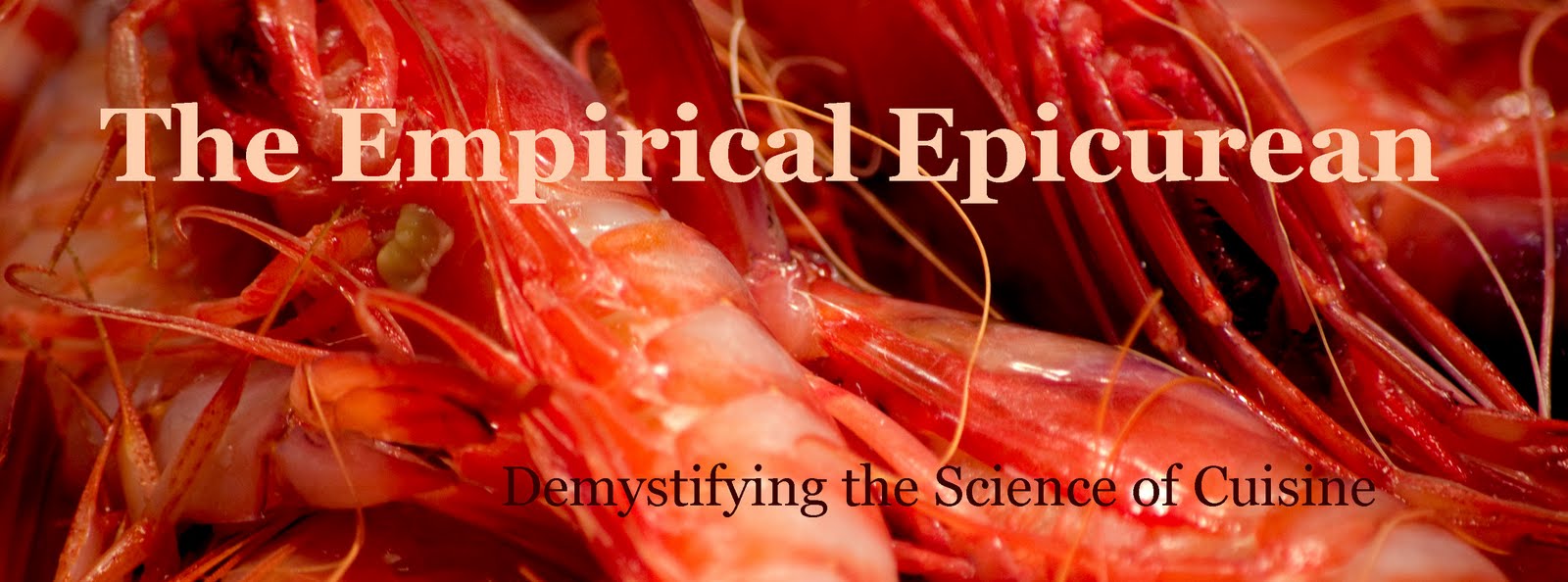
Food science tends to take a reductionist approach to evaluating complex foodstuffs, analyzing individual components and extrapolating the results to obtain a comprehensive, if somewhat artificial, understanding of the entire product. However, as is true for other scientific enterprises as well, this can result in an obscured impression of reality. For this reason, many scientists strive to develop experiments that allow them to probe as realistic a simulation as possible. In regards to biologically oriented fields, the term “biomimetics” has been coined to encapsulate such technologies. In their article investigating the aromatic profile of roasted coffee beans, Poisson et al employ biomimetic “in-bean” experiments to gain a more accurate understanding of the formation of odorant molecules during roasting (article abstract). Although previous studies have investigated flavor formation in coffee, the vast majority of these have been conducted using vastly simplified model systems that may not accurately reflect the normal processes occurring inside coffee beans. Studies comparing the flavor profiles of beans roasted whole to those ground before roasting have demonstrated the indispensability of the whole bean environment to normal flavor formation.
Poisson et al utilize a relatively new approach to circumvent the insufficiencies faced by experiments based on model systems. They extract the flavor-precursor molecules from unroasted, green coffee beans by soaking them in hot water. The beans can then be reconstituted either with the natural bean extract or with synthetic “biomimetic” solutions containing the most likely principle precursors to coffee bean flavor molecules (as suggested by experiments in model systems). The reconstitution step allows the scientists to intervene and alter the composition of the replenishing extract, so that they can trace the result of various precursors after the “spiked” beans have been roasted. By controlling the types of precursors present in the unroasted beans, the scientists can determine the effect of the presence or absence of particular precursors on the formation of various flavor molecules upon roasting.

The procedure also enables the to spike the beans with isotope-labeled precursors, which contain carbon-13 (heavier than the more abundant carbon-12 – see http://en.wikipedia.org/wiki/Isotope for more information on isotopes). Upon roasting, these carbon-13 labeled precursors are incorporated into odorant molecules, and can be identified using mass spectrometry (a technique that identifies molecules based on their masses – therefore if the mass is greater than expected for the compound containing only carbon-12, the difference between the expected and experimental value tells you how many carbon-13 atoms were incorporated). Therefore, if exhausted green coffee beans are spiked with only a particular labeled precursor, the scientists can trace which odorant molecules contain the carbon-13 isotopes (and can also identify the number of isotopes, and therefore the number of precursors incorporated). Such a determination of the fate of various precursors provides significant insight into the mechanism of formation of these odorant molecules during roasting.

Through use of this in-bean approach, Poisson et al were able to confirm many of the formation pathways proposed based on model systems. However this method also revealed a variety of alternative pathways that had not been suggested due to simplification in these models. Unlike previous experiments, the in-bean experiments allowed researchers to maintain the complexity of the coffee bean, and thus did not eliminate molecules that could be potentially important contributors to mechanisms of flavor formation. Though the researchers feel that improvements to this method are still necessary (optimization of the reconstituting mixture and reconstitution efficiency, for example), they stress the importance of biomimetic techniques in determining the nature of reactions that occur during food processing of any kind. This type of approach is analogous to in vivo studies in biomedical research, which are seen as an imperative step toward gaining a full understanding of biological processes. Food science must adopt such a standard, as in order to obtain the most accurate and informative results, studies of food processing and cooking must be performed under conditions as authentic as possible.
Poisson, L.;Schmalzried, F.; Davidek, T.; Blank, I.; Kerler, J. Study on the Role of Precursors in Coffee Flavor Formation Using In-Bean Experiments. J. Agric. Food Chem., [Online] 2009, 57 (21), 9923–9931. http://pubs.acs.org/doi/full/10.1021/jf901683v (accessed November 15, 2009).





